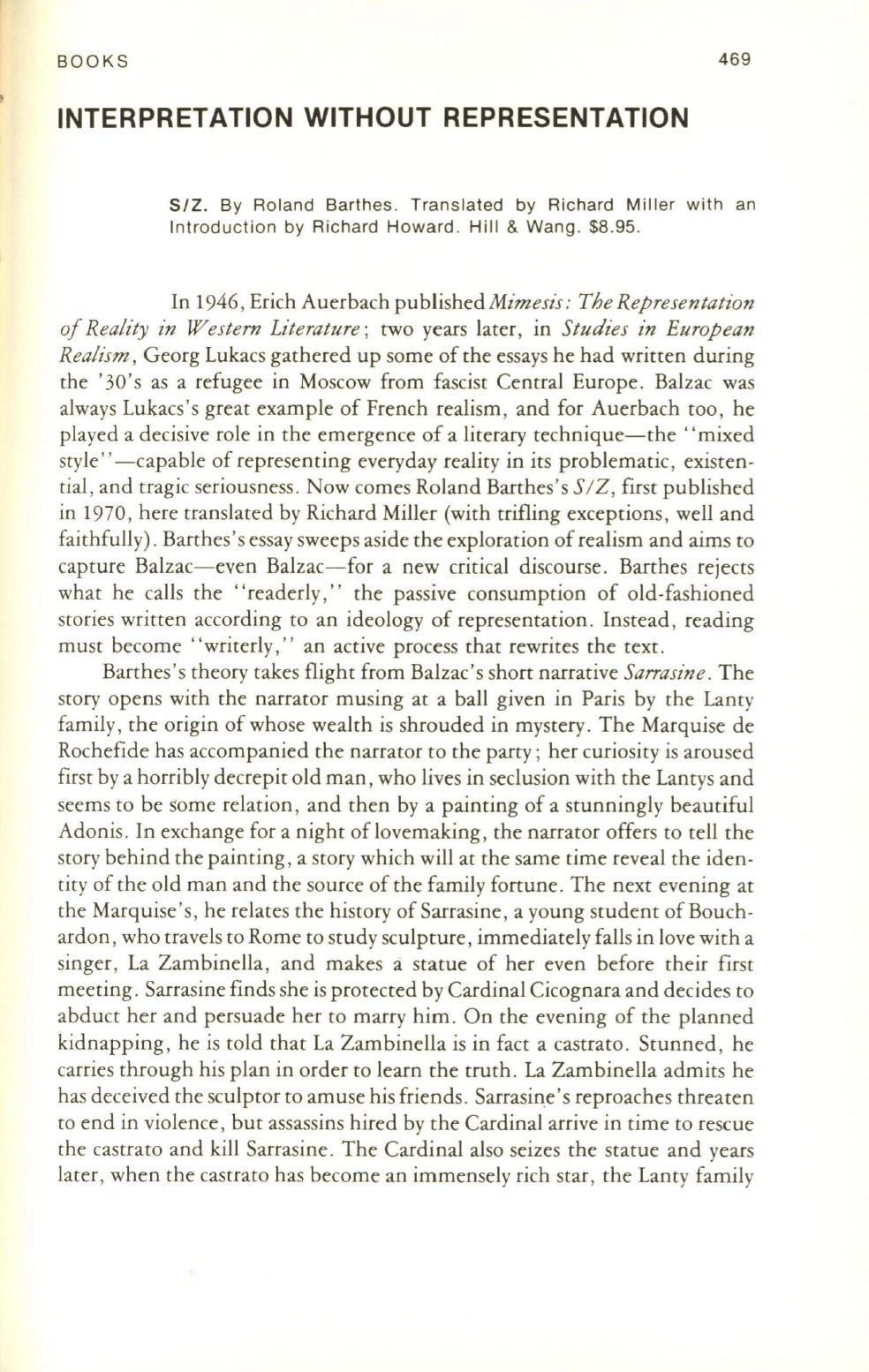
BOOKS
469
INTERPRETATION WITHOUT REPRESENTATION
S/ Z.
By Roland Barthes. Translated by Richard Miller with an
Introduction by Richard Howard. Hill
&
Wang. $8.95.
In 1946, Erich Auerbach published
Mimesis: The Representation
of Reality in Western Literature;
two years later, in
Studies in European
Realism,
Georg Lukacs gathered up some of the essays he had written during
the '30's as a refugee in Moscow from fascist Central Europe . Balzac was
always Lukacs 's great example of French realism, and for Auerbach too, he
played a decisive role in the emergence of a literary technique-the' 'mixed
style" -capable of representing everyday reality in its problematic, existen–
tial, and tragic seriousness . Now comes Roland Barthes's
S / Z,
first published
in 1970, here translated by Richard Miller (with trifling exceptions, well and
faithfully). Barthes 's essay sweeps aside the exploration of realism and aims to
capture Balzac-even Balzac-for a new critical discourse. Barthes rejects
what he calls the "readerly," the passive consumption of old-fashioned
stories written according to an ideology of representation. Instead, reading
must become "writerly ," an active process that rewrites the text .
Barthes's theory takes flight from Balzac's short narrative
Sarrasine.
The
story opens with the narrator musing at a ball given in Paris by the Lanty
family, the origin of whose wealth is shrouded in mystery. The Marquise de
Rochefide has accompanied the narrator to the party; her curiosity is aroused
first by a horribly decrepit old man, who lives in seclusion with the Lantys and
seems to be Some relation, and then by a painting of a stunningly beautiful
Adonis. In exchange for a night oflovemaking, the narrator offers to tell the
story behind the painting, a story which will at the same time reveal the iden–
tity of the old man and the source of the family fortune . The next evening at
the Marquise's, he relates the history of Sarrasine, a young student of Bouch–
ardon, who travels to Rome to study sculpture, immediately falls in love with a
singer, La Zambinella, and makes
a
statue of her even before their first
meeting. Sarrasine finds she is protected by Cardinal Cicognara and decides to
abduct her and persuade her to marry him . On the evening of the planned
kidnapping, he is told that La Zambinella is in fact a camato. Stunned, he
carries through his plan in order to learn the truth . La Zambinella admits he
has deceived the sculptor to amuse his friends. Sarrasine's reproaches threaten
to end in violence, but assassins hired by the Cardinal arrive in time to rescue
the castrato and kill Sarrasine . The Cardinal also seizes the statue and years
later, when the castrato has become an immensely rich star, the Lanty family


